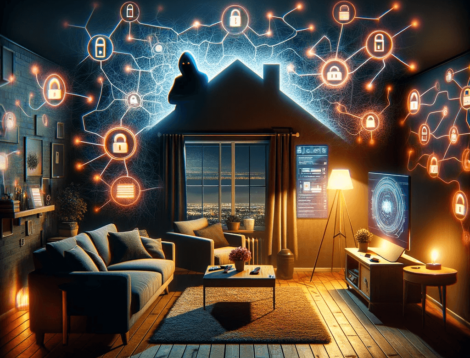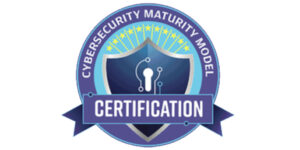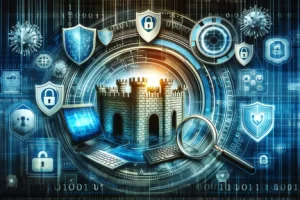Examining IoT Device Security
There is no denying that contemporary homes are becoming more and more like networked hubs as a result of the integration of technology. Modern appliances, which offer previously unheard-of convenience, frequently need WiFi connections and specialized apps, such as toasters, refrigerators, and washing machines. However, this connection may have drawbacks and can lead to risks that many users or home owners may not be aware of, as Dasha Deckwerth, President of Cyber Security Consulting, and MSSP Company Stealth-ISS Group Inc. point out. IoT devices, also known as Internet of Things devices, are everyday objects that are connected to the internet and can communicate with each other. These devices, such as smart TVs, thermostats, and appliances, offer convenience and automation in our homes. However, their connectivity also poses risks in terms of data security and privacy. The Internet of Things (IoT) devices, which represent this continuous digital progress, hold the potential to simplify our daily routines. Imagine being able to voice-command coffee to be brewed at a specific time, printers to reorder ink when it runs low, and temperature control for rooms. However, there is a shadowy aspect to this technological marvel that is sometimes disregarded: the hazards related to data security, privacy, and potential breaches.
Past Mistakes and Their Consequences
We’ve learned from the past that no technology is 100% impervious. The 2016 Mirai botnet assault was one egregious instance. Webcams and smart refrigerators were among the many IoT devices that hackers leveraged in order to conduct a huge Distributed Denial of Service (DDoS) attack that brought down major internet services across the globe. In a similar vein, a smart thermostat breach showed the terrifying potential for mischief when attackers changed the thermostat settings in victims’ houses, putting their health in danger and inflicting discomfort. This attack highlighted the vulnerability of IoT devices and the need for stronger security measures. Companies and individuals now understand the importance of regularly updating and securing their devices to prevent similar breaches in the future.
Dangers Lying in Wait in Our Networked Homes
Although the concept of a perfectly integrated and harmoniously interconnected house is attractive, there are a number of hidden concerns. The fact that gadgets communicate covertly with one another draws attention to a less evident issue: data privacy. A smart TV, for example, may track and log your viewing patterns in addition to providing personalized recommendations for content to watch. There have been reports of smart TVs sending this data over the internet in an unencrypted state. This reveals personal information about users, including their entertainment and political choices.
The Importance of Constant Vulnerability Scanning
Continuous vulnerability scanning has evolved from a luxury to a requirement. With over 25,000 CVE vulnerabilities disclosed in only one year, the risks during the intervals between standard scans are unsustainable. This type of monitoring provides constant oversight of IT infrastructures while utilizing automation to lessen the burden on IT staff. This ensures that threats are detected and dealt with as quickly as possible, effectively barricading potential entry sites. As a result, businesses must take a more proactive approach to cybersecurity by deploying continuous vulnerability scanning. This continuous monitoring enables real-time vulnerability detection and mitigation, allowing enterprises to remain ahead of emerging threats. Organizations can detect and patch gaps before they are exploited by bad actors by scanning for vulnerabilities on a continuous basis. Constant vulnerability scanning also gives enterprises valuable insights into their entire security posture, allowing them to make informed risk mitigation decisions. Continuous vulnerability scanning is no longer a luxury in today’s ever-changing threat landscape; it is a requirement for any firm serious about securing its digital assets.
Data Privacy: Extending Beyond Personal Information
Although most conversations revolve around individual data, household data as a whole is also at risk. Online trackers may be able to identify people based on the particular configurations of the gadgets in their houses. Just think about this: Over time, if your smart lighting system is aware of when you generally turn off the lights or engage or disengage your smart door locks, this information will accumulate into a pattern. When all of these data are combined, they can reveal personal information about your everyday activities, leaving you vulnerable to online and offline dangers.
An Appeal for Vigilance and Mindfulness
Customers still bear some of the responsibility, even while businesses like Google take action to address these vulnerabilities. The key is awareness. Customers should research the security features, historical vulnerabilities, and regular firmware updates of an IoT device before making a purchase. In addition, the drive for stronger laws, as seen by the EU Cyber Resilience Act and the National Cybersecurity Strategy of the United States, demonstrates a general awareness of these risks. There is optimism for a time when smart homes can be safe and convenient, thanks to legislative initiatives and technological developments. As technology continues to advance, it is crucial to achieve a balance between convenience and security in our connected homes.
By being aware of the risks associated with IoT devices and demanding stronger security measures, we can create smarter and safer living environments. Legislative initiatives and technological developments are promising steps towards achieving this goal, but it is ultimately up to individuals to research and choose secure IoT devices to protect their privacy and personal security.
We shouldn’t let our houses—which have historically served as our havens—become the weak points in our privacy and personal security. Smarter, safer living environments will come about as a result of increased awareness, alertness, and demand for higher security standards.





